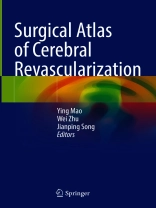This Atlas summarizes current surgical strategy for cerebral revascularization in the treatment of complex neurovascular diseases. It focuses on complex intracranial aneurysms, which are mostly large/giant, irregular and short of enough collateral compensation. In the first part, it starts from the extracranial-intracranial (EC-IC) bypass strategy. For the complex middle cerebral artery aneurysms, the types of EC-IC bypass are determined based on the angioarchitecture. Furthermore, various intracranial-intracranial (IC-IC) bypasses are introduced, with the advantage of no need for graft vessel harvesting and preferable matching of donor and receipt arteries. This Atlas provides useful knowledge and cases about this basic and indispensable skill for neurosurgeons.
İçerik tablosu
External carotid artery – Radial artery – Middle cerebral artery bypass.- Superficial temporal artery – Radial artery – Middle cerebral artery bypass.- Superficial temporal artery – Middle cerebral artery bypass.- Anterior cerebral artery (A3) – Anterior cerebral artery (A3) bypass.- Middle cerebral artery – Middle cerebral artery bypass.- Occipital artery – Posterior inferior cerebellar artery bypass.- Posterior cerebral artery – Posterior cerebral artery bypass.- Posterior inferior cerebellar artery – Vertebral artery bypass.- Anterior cerebral artery (A2) – Radial artery – Anterior cerebral artery (A4) bypass.- Carotid endarterectomy.- Computational fluid dynamics of cerebral revascularization.- Functional magnetic resonance imaging study of cerebral revascularization.- Perspective: The topographic model of cerebral revascularization.
Yazar hakkında
Ying Mao, MD, Ph D, is the President of Huashan Hospital and professor at Fudan University, Vice Chief of Department of Neurosurgery at Huashan Hospital, Shanghai, China.
Wei Zhu, Department of Neurosurgery, Fudan University, Shanghai, China.
Jianping Song, Department of Neurosurgery, Fudan University, Shanghai, China.












